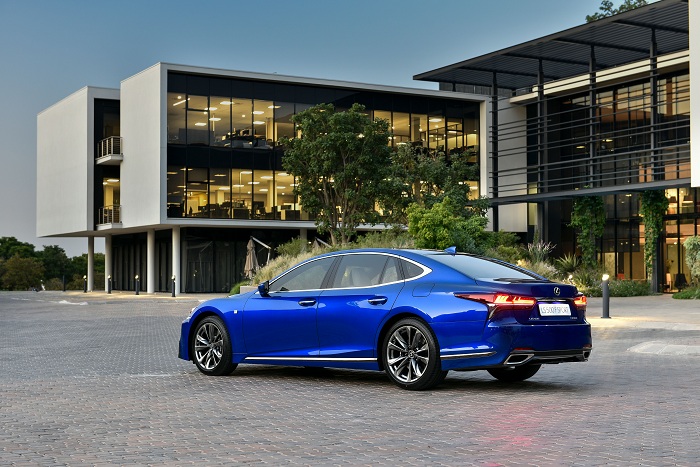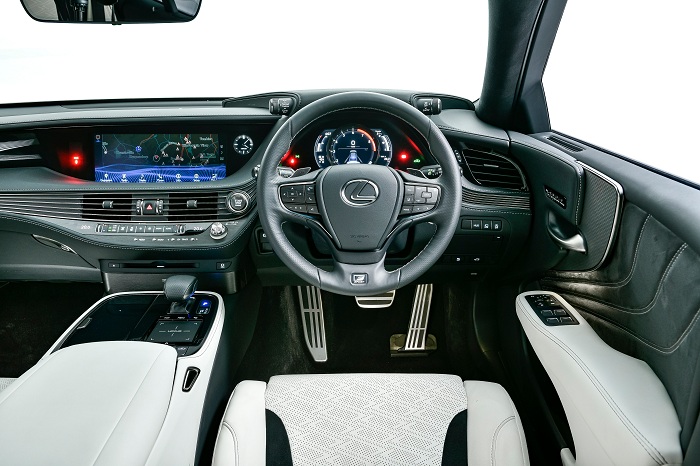Initially unveiled in the run-up to the New York International Auto almost two years ago, the F Sport mainly receives a number of aesthetics uptakes, which on the outside consists of F Sport exclusive 20-inch alloy wheels, a model specific black mesh Spindle grille, F Sport badges, unique rocker panels and bespoke bootlid moulds.

Inside, and continuing with the Japanese principle of omotenashi or selfless hospitality, the F Sport’s signature touches includes a F Sport leather wrapped three-spoke steering wheel, F Sport leather trimmed sport seats with a perforated pattern, simulated leather on the door armrest, aluminium and dark wood inserts, a suede headliner, F Sport aluminium pedals, a LFA-style instrument cluster display and a choice of three colours; White and Black, White and Grey and Flare Red.
Like the regular LS, the F Sport once again makes use of Lexus’ Global Architecture-Luxury (GA-L) platform, but with alterations such as the RC-derived Variable Gear Ratio Steering and Dynamic Rear Steering systems, larger brakes with a six-piston calliper setup at the front and four at the rear, Adaptive Variable Suspension with four modes (Eco, Normal, Sport and Sport+), a revised Vehicle Dynamics Integrated Management (VDIM) system and a sports-tuned air suspension.

Up front, the F Sport retains the LS 500’s twin-blown 3.5-litre designated 3.4-litre V6 that produces 310 kW and 600 N.m of torque, which is teamed to a 10-speed automatic gearbox. Said to rival the shift times of a dual-clutch ‘box, the drivetrain allows the F Sport to reach 100 km/h from standstill in five seconds and on to a top speed limited to 250 km/h. Fuel consumption is rated at 9.5 L/100 km.
Despite its changes inside, outside and underneath, the F Sport is priced lower than the regular LS 500 with a sticker of R1 975 900, a credit of R175 200, while still including the marque’s seven year/105 000 km warranty and maintenance as standard.
















